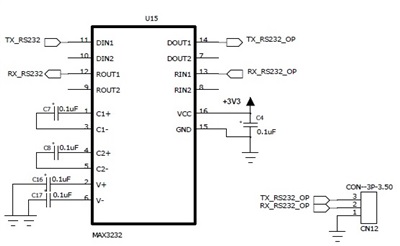Hi...i'm using our own data logger which has LM4F232H5QC with 8mhz crystal..i'm checking the uart communiation using uart 7.n i'm using tera term terminal ..i'm using sample code of stellaries controller.but i'm not able to get see anything on tera term terminal .Please help me if i would have done any mistake..
int
main(void)
{
tContext sContext;
tRectangle sRect;
//
// Enable lazy stacking for interrupt handlers. This allows floating-point
// instructions to be used within interrupt handlers, but at the expense of
// extra stack usage.
//
ROM_FPULazyStackingEnable();
//
// Set the clocking to run directly from the crystal.
//
ROM_SysCtlClockSet(SYSCTL_SYSDIV_1 | SYSCTL_USE_OSC | SYSCTL_OSC_MAIN |
SYSCTL_XTAL_8MHZ);
//
// Initialize the UART.
//
ROM_SysCtlPeripheralEnable(SYSCTL_PERIPH_GPIOE);
ROM_GPIOPinConfigure(GPIO_PE0_U7RX);
ROM_GPIOPinConfigure(GPIO_PE1_U7TX);
ROM_GPIOPinTypeUART(GPIO_PORTE_BASE, GPIO_PIN_0 | GPIO_PIN_1);
UARTStdioInit(0);
UARTprintf("Hello, world!\n");
//
// Initialize the display driver.
//
CFAL96x64x16Init();
//
// Initialize the graphics context.
//
GrContextInit(&sContext, &g_sCFAL96x64x16);
//
// Fill the top 24 rows of the screen with blue to create the banner.
//
sRect.sXMin = 0;
sRect.sYMin = 0;
sRect.sXMax = GrContextDpyWidthGet(&sContext) - 1;
sRect.sYMax = 23;
GrContextForegroundSet(&sContext, ClrDarkBlue);
GrRectFill(&sContext, &sRect);
//
// Put a white box around the banner.
//
GrContextForegroundSet(&sContext, ClrWhite);
GrRectDraw(&sContext, &sRect);
//
// Put the application name in the middle of the banner.
//
GrContextFontSet(&sContext, g_pFontCm12);
GrStringDrawCentered(&sContext, "hello", -1,
GrContextDpyWidthGet(&sContext) / 2, 10, 0);
//
// Say hello using the Computer Modern 40 point font.
//
GrContextFontSet(&sContext, g_pFontCm12/*g_pFontFixed6x8*/);
GrStringDrawCentered(&sContext, "Hello World!", -1,
GrContextDpyWidthGet(&sContext) / 2,
((GrContextDpyHeightGet(&sContext) - 24) / 2) + 24,
0);
//
// Flush any cached drawing operations.
//
GrFlush(&sContext);
//
// We are finished. Hang around doing nothing.
//
while(1)
{
}
}


